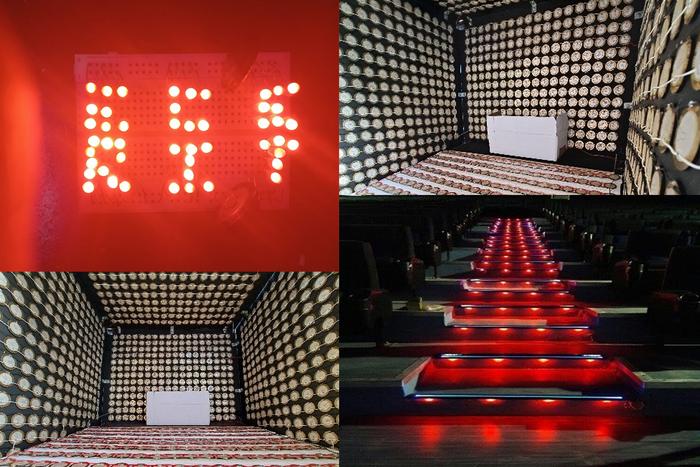WASHINGTON, Nov. 14, 2023 – The risk of hearing loss does not come just from loud machinery or other obvious noise. It can also affect people in public environments like theaters and concert halls. Absorbing this excess sound to make public environments safer for hearing and using the unwanted sound waves to create electricity is the aim of a paper published this week in Physics of Fluids, by AIP Publishing.

Credit: Roshan Zameer Ahmed, Prajwal Hegde, and P Ganesh
WASHINGTON, Nov. 14, 2023 – The risk of hearing loss does not come just from loud machinery or other obvious noise. It can also affect people in public environments like theaters and concert halls. Absorbing this excess sound to make public environments safer for hearing and using the unwanted sound waves to create electricity is the aim of a paper published this week in Physics of Fluids, by AIP Publishing.
“According to the Centers for Disease Control and Prevention, an estimated 12.5% of children and adolescents aged 6-19 years and 17% of adults aged 20-69 years have suffered permanent damage to their hearing from excessive exposure to noise,” author Rajendra Prasad P said. “Noise above 70 decibels for a prolonged period of time may start to damage our hearing. We need systems that can mitigate really big sounds.”
In their study, the authors focused on enclosed spaces like theaters and concert halls and built a system of piezoelectric sensors that can be installed in the walls, floors, and ceilings to absorb sound waves and collect their energy. Sound waves from loudspeakers in these enclosed spaces is usually between 60 and 100 decibels, sometimes reaching 120 decibels, Prasad said.
“We classified the sound present in closed environments based on the intensity (decibels) that can potentially cause hearing loss,” Prasad said. “Sound energy absorbed using piezoelectric sensors is processed by our system to convert it into electrical energy. Based on the pattern of energy generation, the output of the system is switched between battery and direct harnessed output.”
To design an optimal system for capturing sound waves in enclosed spaces, the authors used computer simulations to fine-tune variables including the voltage needed to power the main device component, the frequency and intensity of the input sound, and piezoelectric sensors tested in parallel and serial configurations.
“The surprising fact is the output of the design is maximum around certain frequencies that align with the frequency and intensity of the sound used in theaters or auditoriums,” Prasad said. “Our design reduces the vibration of sound each time it reflects from the piezoelectric material and reduces the overall sound intensity of the enclosed space.”
In addition to decreasing the risk of hearing loss, the authors wanted to design an energy system that is good for the environment, using a smart power management feature that adjusts depending on how much sound is coming in. It also uses environmentally friendly materials.
“The piezoelectric material we used is a form of quartz, which is nothing more than a mineral composed of silica,” Prasad said. “It is easily biodegradable and also recyclable.”
###
The article “Piezoelectric system on harnessing sound energy in closed environment” is authored by Roshan Zameer Ahmed, Rajendra Prasad P, Mohan Kumar M, Nischith Raj K G, Prajwal Hegde, and P Ganesh. It will appear in Physics of Fluids on Nov. 14, 2023 (DOI: 10.1063/5.0173934). After that date, it can be accessed at https://doi.org/10.1063/5.0173934.
ABOUT THE JOURNAL
Physics of Fluids is devoted to the publication of original theoretical, computational, and experimental contributions to the dynamics of gases, liquids, and complex fluids. See https://aip.scitation.org/journal/phf.
Journal
Physics of Fluids
DOI
10.1063/5.0173934
Article Title
Piezoelectric system on harnessing sound energy in closed environment
Article Publication Date
14-Nov-2023




